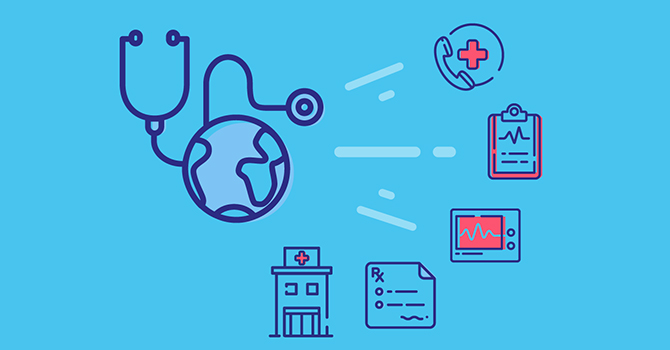A Comprehensive Overview on How Health Care RCM Functions to Streamline Payment and Collections
Browsing the complexities of health care revenue cycle monitoring (RCM) is vital for providers intending to enhance their invoicing and collections procedures. The overview unloads the complexities of RCM, from person enrollment to accounts receivable monitoring, providing understandings into optimizing each step. Incorporating advanced innovation and standardized procedures can considerably reduce claim rejections and speed up repayment cycles. Yet, the true difficulty lies in seamlessly merging these elements to increase capital. As we explore the core components and methods that drive effectiveness, one concern continues to be: just how can healthcare entities ideal setting themselves to grow economically in an ever-evolving industry?
Comprehending Earnings Cycle Management
RCM is an important administrative feature that incorporates the entire financial procedure of person treatment, from the first appointment setting to the final repayment of the equilibrium. It is an intricate treatment designed to recognize, accumulate, and take care of the profits from the services offered to individuals.
The RCM procedure begins when a patient schedules a consultation and prolongs via the person's treatment trip, consisting of invoicing and collections. A key purpose is to decrease the time between obtaining and offering a service repayment, therefore enhancing the organization's financial health and wellness. RCM includes various features such as client enrollment, insurance verification, cost capture, coding, claims submission, payment posting, and taking care of allures and rejections.
Trick Parts of RCM
In the world of Income Cycle Administration (RCM), understanding its vital elements is fundamental to attaining economic effectiveness within medical care companies. RCM is a detailed procedure that includes numerous phases, each crucial to making certain reliable invoicing and collections. The primary elements consist of individual enrollment, insurance coverage verification, fee capture, coding, claim submission, repayment posting, and receivable monitoring.


As soon as coded, insurance claims are submitted to payers, where precision is critical to avoid hold-ups or rejections - Healthcare RCM. Settlement posting involves videotaping the gotten settlements, which permits for the reconciliation of accounts. Last but not least, balance dues management concentrates on monitoring and resolving overdue cases, making certain timely follow-up and resolution
Each part of RCM is adjoined, and inadequacies in any component can interfere with the whole cycle. Consequently, grasping these aspects is necessary for medical care providers to maximize income and enhance their economic health.
Techniques for Effective Payment

Systematizing billing treatments throughout the organization is another crucial strategy. Establishing clear standards for documentation, coding, and submission helps preserve uniformity and compliance with governing demands. Educating staff on a regular basis on these procedures guarantees every person is current with the most current modifications in invoicing codes and payer plans.
Accurate cost capture is essential in preventing income leak. Executing normal audits and surveillance systems allows for his explanation the identification and modification of disparities prior to they affect revenue. In addition, preserving open lines of interaction with payers assists to rapidly solve any conflicts or misunderstandings that might emerge.

Last but not least, appealing clients early in the invoicing procedure by supplying clear quotes and instructional materials about their economic responsibilities can substantially reduce complication and enhance payment timeliness. These approaches jointly add to a more monetarily healthy and efficient invoicing system.
Enhancing Collections Procedures
A robust collections procedure is essential for keeping monetary stability within medical care companies. Offered the intricacies of clinical billing and the range of payer demands, enhancing the collections process entails implementing calculated measures that guarantee exact and timely payment of services rendered. Central to this is using innovation to automate and enhance procedures, minimizing hands-on errors and enhancing effectiveness. Automation devices can assist in tracking insurance claim standings, sending prompt pointers to patients, and handling rejections extra successfully.
Educating staff to recognize the nuances of insurance plan and billing codes is just as crucial. This expertise equips them to attend to payment discrepancies swiftly and interact efficiently with patients regarding their financial responsibilities. Furthermore, transparent and clear individual interactions are critical. Giving thorough descriptions of charges and providing versatile settlement strategies can boost patient complete satisfaction and timely settlements.
Regular audits of the collections procedure must be great site performed to recognize areas for renovation and guarantee conformity with policies. By evaluating data, healthcare organizations can identify trends, expect possible issues, and adjust techniques appropriately (Healthcare RCM). Inevitably, a well-enhanced collections procedure not just sustains monetary health and wellness but additionally adds to a more smooth experience for individuals and staff alike
Optimizing Profits Streams
Structure upon the structure of a strong collections process, health care organizations can further bolster their financial stability by strategically enhancing income streams. This entails a multi-faceted approach, starting with a thorough evaluation of existing income resources to recognize inadequacies and areas for development. Using advanced data analytics tools allows organizations to get understandings right into payer mix, individual demographics, and service utilization patterns, permitting data-driven choices that improve earnings capture.
Applying automated billing systems can substantially decrease errors and expedite insurance claims refining, guaranteeing that income is gathered much more successfully. Moreover, maximizing payer agreements with normal settlements can enhance compensation prices and terms, directly affecting the lower line. Branching out service offerings, such as including telehealth or health care, can likewise attract a broader patient base, therefore enhancing profits potential.
One more important element is improving individual interaction and complete satisfaction, as completely satisfied clients are more probable to abide by therapy strategies and make timely repayments. her latest blog Using adaptable repayment alternatives and transparent billing methods can enhance collections and foster patient commitment. Healthcare RCM. By embracing these methods, healthcare companies can produce an extra durable financial framework, making certain sustained development and stability in an ever-changing sector landscape
Verdict
Finally, medical care Earnings Cycle Management (RCM) plays an essential role in maximizing payment and collections procedures by incorporating crucial components such as person enrollment, insurance coverage confirmation, cost capture, coding, claims entry, and receivable monitoring. By using innovative technology, standardizing treatments, and promoting individual engagement, health care suppliers can significantly minimize insurance claim rejections, accelerate settlement cycles, and enhance cash circulation. This thorough approach to RCM inevitably causes improved economic performance and sustainability for medical care companies.
The RCM procedure starts when a patient schedules an appointment and expands with the patient's treatment journey, consisting of billing and collections.Another essential component is improving person engagement and fulfillment, as completely satisfied patients are more most likely to stick to therapy strategies and make timely settlements. Supplying flexible payment alternatives and clear billing techniques can boost collections and foster patient commitment.In final thought, medical care Income Cycle Management (RCM) plays an essential duty in maximizing invoicing and collections procedures by integrating essential components such as person registration, insurance verification, cost capture, coding, asserts entry, and accounts receivable monitoring. By utilizing advanced modern technology, systematizing treatments, and cultivating person involvement, medical care companies can substantially reduce insurance claim rejections, speed up repayment cycles, and boost cash money circulation.